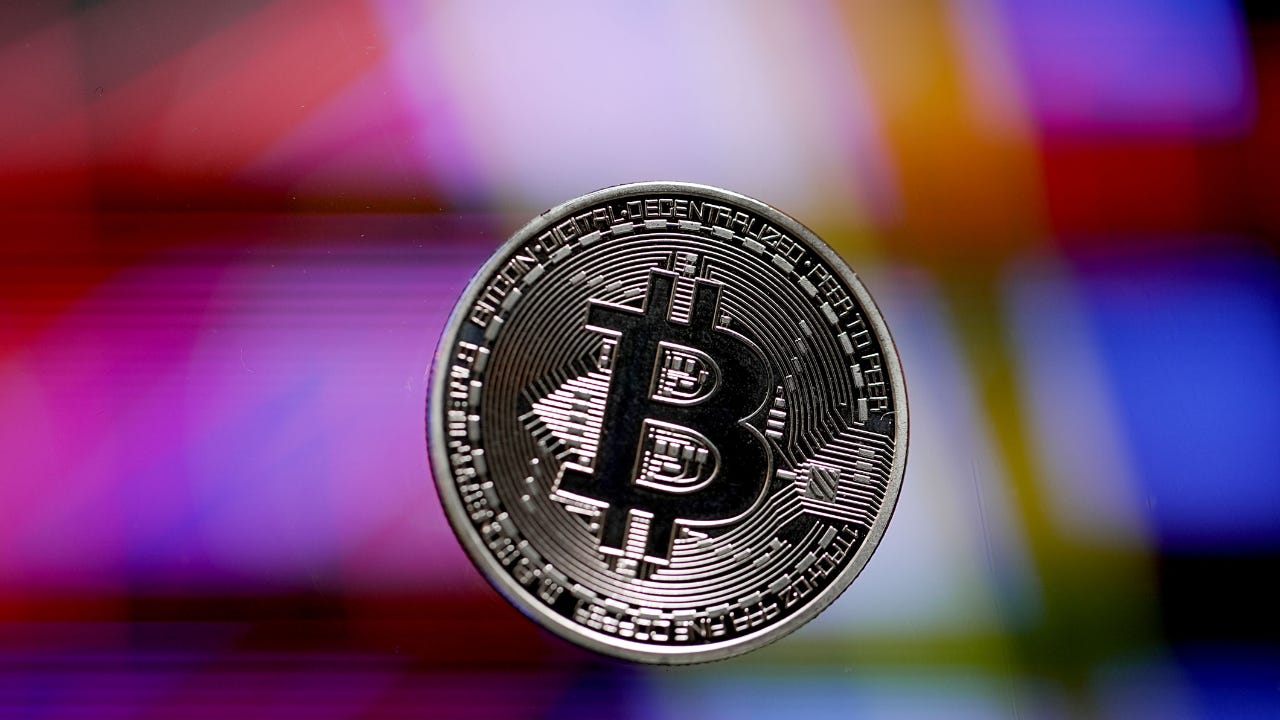Bitcoin price climbs near $39,000, Ethereum surges higher

The price of Bitcoin jumped to $38,898 on Tuesday morning, an increase of 4.4 percent over the previous 24 hours, according to CoinMarketCap. The world’s largest cryptocurrency briefly rallied above $39,000 in overnight trading before quickly retreating and then bouncing back.
The second-largest cryptocurrency, Ethereum, also increased Tuesday, spiking nearly 10 percent to $2,795. It’s still down sharply from its all-time high reached in November of almost $4,900 and has declined by about 25 percent so far this year.
Other cryptocurrencies also rallied in early Tuesday trading. Solana surged more than 17 percent to $108.09 after Coinbase listed two tokens based on the Solana ecosystem. Terra jumped nearly 10 percent to $51.89. The move comes after Terra had seen a decline of more than 30 percent over the previous week.
Most other top cryptocurrencies were higher as of Tuesday morning, with some showing meaningful jumps.
- Polkadot – up 10.5 percent
- Cosmos – up 8.0 percent
- Avalanche – up 6.3 percent
- Polygon – up 6.0 percent
- XRP – up 5.8 percent
- Cardano – up 4.0 percent
- Shiba Inu – up 3.8 percent
- Binance Coin – up 3.0 percent
- Dogecoin – up 2.7 percent
Cryptocurrency investors have been grappling with the prospects of higher interest rates, as the Federal Reserve looks to reduce financial stimulus it used to support the economy during the pandemic. On Tuesday, the Reserve Bank of Australia terminated its bond-purchase program but maintained its benchmark interest rate at a record low of 0.1 percent.
The potential for higher rates has caused investors to rethink riskier investments and their valuations. Stocks in January suffered their worst month since March 2020, with the S&P 500 falling 5.3 percent and the tech-heavy Nasdaq dropping 9 percent.
The cryptocurrency market is also awaiting further clarity from the Biden administration, after reports that it will soon file an executive order that directs the federal government to set policies and regulate digital assets such as cryptocurrency.
Bitcoin still well below 52-week high
Bitcoin’s price has been under serious pressure since the Fed’s early November meeting. The cryptocurrency topped out at nearly $69,000 in November.
From there, it’s been mostly downhill. The downtrend continued through much of December and into January. After peaking above $51,000 in late December, the digital currency fell to nearly $33,000 in late January. Bitcoin bounced off six-month lows set earlier in the week but remains down more than 17 percent since the start of the year.
Nevertheless, Bitcoin remains atop the list of most valuable cryptocurrencies by total market capitalization.
Fed signals rate increases on the way, bond buying to end
At its January meeting, the Fed announced that it was continuing to taper its purchases of bonds and expects to stop buying bonds by early March. The central bank also indicated that it was poised to increase rates soon, signaling what many experts expect will be a rate hike as early as March.
“With inflation well above 2 percent and a strong labor market, the Committee expects it will soon be appropriate to raise the target range for the federal funds rate,” said the Federal Open Market Committee in a prepared statement.
Now market analysts are expecting the Fed to increase interest rates at its upcoming March meeting. According to CME’s FedWatch Tool, the market is now pricing in a 100 percent probability that rates will rise in March. The only outstanding question is by how much. The market is expecting a 91 percent probability of a boost of 25 basis points, with the remainder projecting a larger 50-point hike.
“While we’re on the cusp of the Fed beginning to raise interest rates, the more significant step of starting to run off the balance sheet is still to come and the Fed provided no additional details in their post-meeting statement,” says Greg McBride, Bankrate’s chief financial analyst. “The combination of rate hikes and eventually shrinking their asset portfolio will complete the transition from going full throttle to putting the brakes on the economy.”
With inflation rising last year at the highest pace in 40 years, the Fed is looking to dampen price increases but not hit the brakes too hard. The resulting decline in stimulus has roiled financial markets in 2022.






